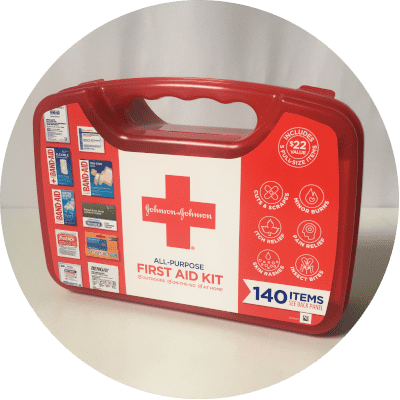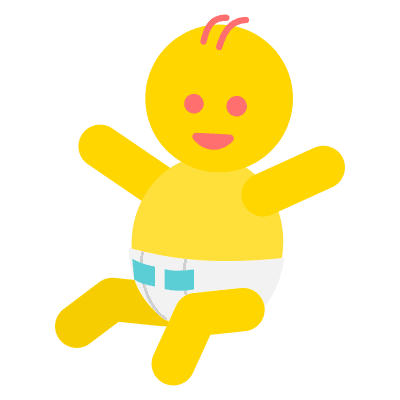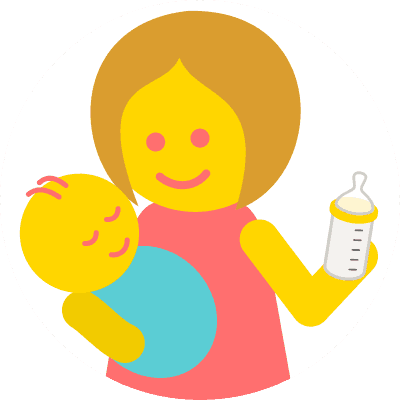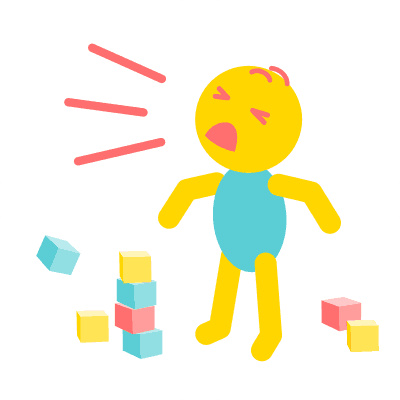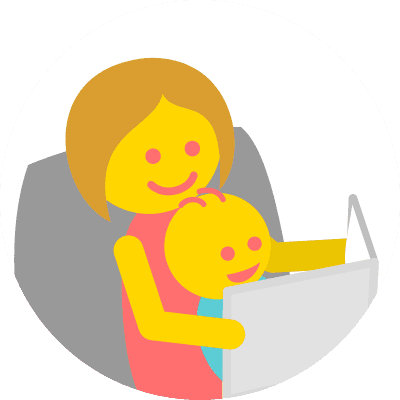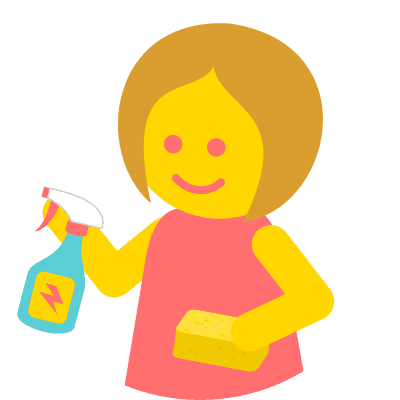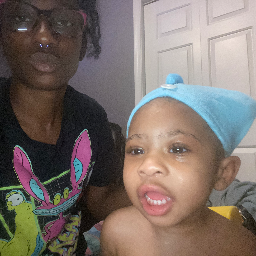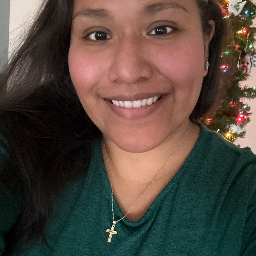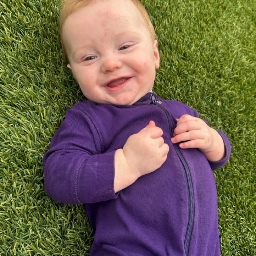How to Make Baby Formula (Illustrated Guide for Babysitters)
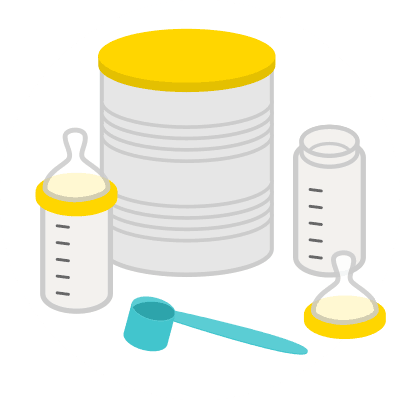

Written & Illustrated by
Matthew James Taylor
Kidsit Founder, General Manager

Baby Formula Video by
Lydia Kutz
Babysitter, Infant Swimming Resources Instructor

Medically Reviewed by
Gina Maria Jansheski, MD, FAAP
Board-Certified Pediatrician, Medical Reviewer
Key Takeaways
- Follow instructions precisely: Always use the ratio printed on the formula tin - too much or too little water can harm the baby’s digestion.
- Ensure hygiene at every step: Wash hands, sterilize bottles (especially new ones), and work in a clean environment to prevent contamination.
- Warm safely, never in a microwave: Use warm water baths to heat bottles rather than microwaving, which creates hot spots.
- Store properly and discard leftovers: Refrigerate prepared bottles, use within 24 hours, and never reuse formula left in the bottle after feeding.
- Check before you start: Always verify the expiration date and the condition of the formula container before preparing a bottle.
When you're babysitting and an infant needs to eat, you're in charge. But how do you make baby formula when you're just left with a tin of powder if you've never done it before?
How do you make baby formula? Follow the instructions on the tin to determine how much formula and water to mix. Once prepared, heat the bottle in a tub of warm water or under the tap, never microwave. You can prepare several batches at once and store them, but it's important to keep the formula cold by refrigerating it.
Kidsit babysitting statistics
47.38% of babysitters can do formula bottle feeding for infants.
(Babysitting statistics calculated weekly from our live member data — Updated 21 Dec 2025)
In this article, I'll teach you step-by-step how to correctly make baby formula, how to keep the utensils clean, how to store it properly, and more.
Check the Expiration Date
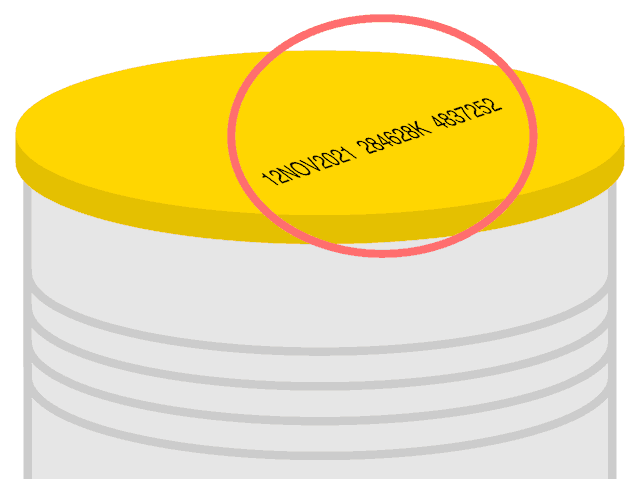
Before you start to prepare any baby formula, be sure to check the expiration or "use by" date on the container. If it's past that date, you shouldn't use it since you can't be sure of its quality.
If parents send you out shopping while you're babysitting and you need to buy baby formula for them, be sure that it's not about to expire in a few days or weeks.
Also, watch out for containers that look dented, damaged, or partially opened where the contents could have been exposed to air.
Wash Your Hands
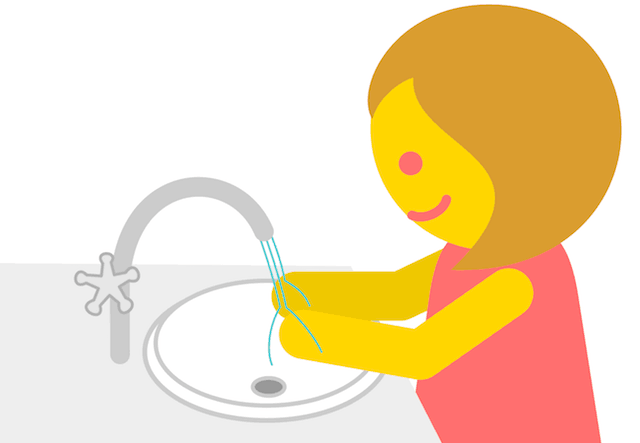
As with any food preparation, you'll want to thoroughly wash your hands with soap and warm water before you start to make baby formula. Dry your hands well when you're done.
You don't need to wear gloves or do anything that extreme when you're preparing formula. But it's important to wash your hands well to make ensure you're not introducing germs to the baby.
Get Your Bottles Ready
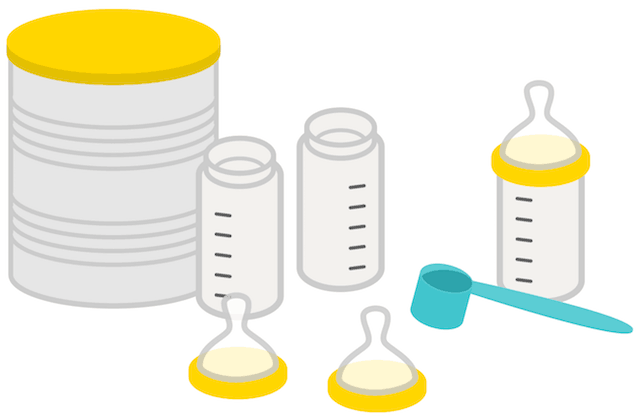
Make sure that your bottles and all of the accessories like caps, nipples, and rings are washed with soap and water and allowed to air dry before you begin. You can use nipple and bottle brushes to get into the hard-to-reach places. If the family you're babysitting for has a dishwasher, you can also use that, but check with them first to determine their preference.
If you happen to be opening a brand new bottle for the first time, then all parts need to be sterilized before using them. You can do this with either a microwave steam sterilizer bag or by simply boiling the bottle and all of its accessories in water for five minutes. This only needs to be done the first time you use a new bottle; it’s not necessary to sterilize it every time.
Add Water to the Bottles
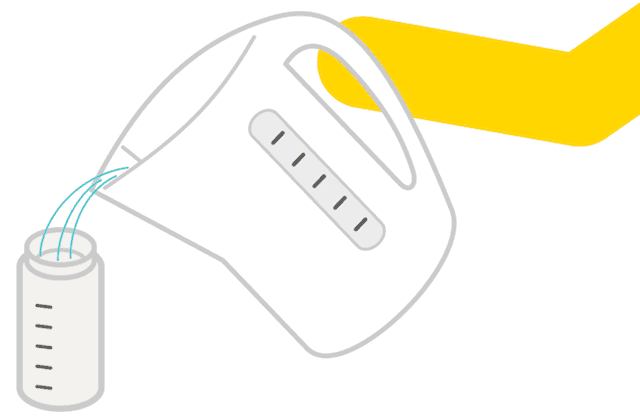
Baby formula usually comes either in powdered form or as a liquid concentrate. Either way, you will need to add water to it.
Always follow the instructions that the manufacturer provides on their container. They know what's best and the ideal amount of water to make the right concentration for babies.
You can use any clean drinking water to prepare formula, including bottled water or just plain old tap water. If you're concerned about bacteria that could be present in municipal tap water in some areas, you can boil the water for one minute and then let it cool down to at least body temperature (37°C or 98.6°F) before mixing with formula. Usually, it will take about 30 minutes to cool down sufficiently, so you'll want to plan in advance when you're going to feed and boil the water accordingly.
If you live somewhere more rural that relies on well water, I would definitely recommend boiling it first for formula preparation.
It's always best to ask the baby's parents how they prepare the formula and if they have any special instructions that you should follow.
Parents will provide the formula needed to feed their babies. But what about when the kids are older? Read my article Do Babysitters Provide Food? (What Parents May Expect From You) to find out!
Fluoridated Water or Not?
Some parents might have concerns about whether or not the local water sources are fluoridated.
There's some debate on exactly how much fluoride babies should or shouldn't ingest. On the one hand, exposing infants to fluoride helps prevent tooth decay during infancy and later in life. But on the other hand, excessive exposure to fluoridated water can also increase the risk of fluorosis. That's faint white streaks or lines that can appear on a child's teeth due to excess fluoride exposure, which can persist into adulthood. For the most recent recommendations from the American Academy of Pediatrics, read this article.
If parents are concerned about their baby being exposed to too much fluoride, there are ways that you can reduce the amount they're exposed to. Personally, I would recommend alternating between fluoridated tap water and water with less or no fluoride.
For example, distilled, purified, demineralized, or deionized bottled water are other possibilities. The occasional use of these alternatives will ensure that the baby will receive some fluoride and get the benefits but will avoid exposure to an excessive amount (source). Ultimately it will be up to the parents you're babysitting for to decide. Follow their wishes if they want you to use low-fluoride or non-fluoridated water for preparing formula exclusively.
Measure Out the Formula
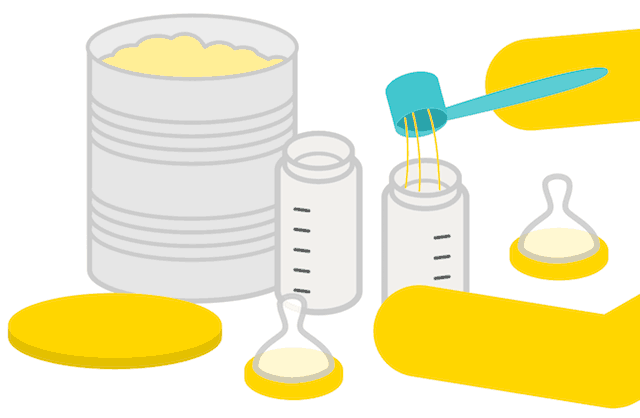
If the family prefers a ready-to-use formula, then you won’t need any additional steps. This type of formula comes in a pre-mixed liquid form already measured out in a bottle, so it's easy to use without any further preparation. Don't add water or any other liquid to a ready-to-use formula.
If you're using a powdered or liquid concentrate formula, then you'll need to measure it out. Again, follow the manufacturer’s instructions to determine how much formula should be prepared for a single feeding. Generally, there will be different amounts to mix depending on the child's age.
For the powdered type of formula, measure out the amount you need based on the package using a measuring cup. Normally, a special scoop will come with the container, and it will tell you the number of scoops you need to use and how much water to add.
For a concentrated liquid formula, you'll want to shake it thoroughly before mixing it with water.
Once you've mixed the liquid or powdered formula with water in the bottle, attach the nipple and cap, and then shake the bottle well to ensure everything is fully mixed.
Note that powdered formula is not sterile, so take care when feeding it to infants with immune problems or who are premature, unless you're specifically directed to by the parents. Sterile liquid infant formula may be recommended for these babies.
Warm Up the Formula (Optional)
Lydia has been working in the childcare industry for 15 years, and owned a childcare agency in Florida, USA for 7 years. During this time as a babysitter she has built up years of experience using baby formula, in this video she shows the best method for warming up bottles.
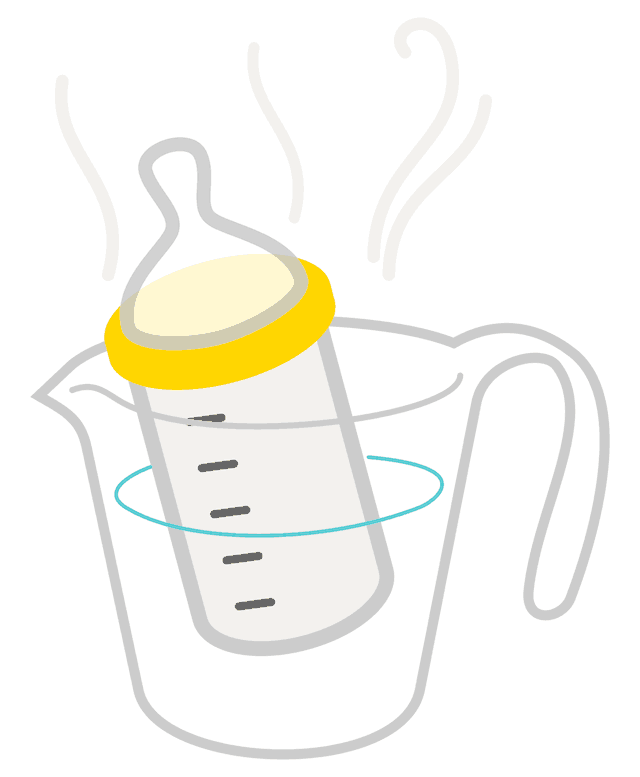
It's perfectly fine to give a baby room-temperature formula or even cold formula straight out of the refrigerator. But most babies do tend to prefer it slightly warmed.
To warm up the prepared formula, place the bottle in a pot of already heated warm water and let it sit for a few minutes (with the stove off). Alternatively, you can run the bottle under warm water in the sink. You don't want the formula to get hot, just lukewarm.
Never warm up bottles of formula in the microwave. This can heat the liquid unevenly. So there could be cold spots in one area but hot spots in others. Even if you shake the bottle after microwaving and test it on your skin, there could still be a hot spot that you missed.
In addition to hot spots, microwaving can cause the plastic in bottles to break down and release chemicals like BPA and phthalates into the formula. Just one more reason to avoid microwaving formula (or anything in plastic).
A common trick that most parents use to test the formula's temperature is to put a few drops on the inside of their wrist. You should only do this after you shake the bottle to distribute the contents first. If you check and it feels uncomfortably hot, let the formula cool down for a few minutes and try again before feeding to avoid burning the baby's mouth. Formula should never be more than lukewarm.
Feeding Formula to the Baby

Once the formula is prepared and optionally warmed up, it's ready to feed to the baby! For bottle feeding tips, read this guidance from the American Academy of Pediatrics.
Once you're done feeding, you should discard any leftover formula if it's been more than two hours since you started feeding (source).
It can be tempting to save the leftover formula and put it back in the refrigerator, especially if the baby doesn't take much during a particular feeding. But you should avoid doing this since the bacteria from inside the baby's mouth will have mixed with the formula and can start to grow and multiply, even when stored in a cool refrigerator. Also, enzymes from the baby’s saliva will be introduced into the remaining formula, which causes proteins in the milk to break down. The risk of the baby getting sick isn't worth saving a few cents worth of formula.
Store the Formula Safely
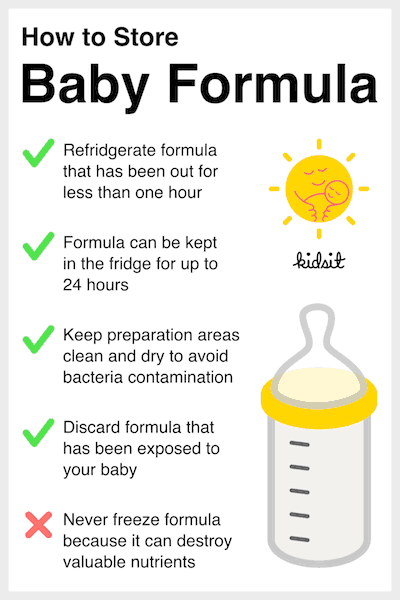
Newborn babies should be feeding 8 to 12 times per day for around the first month. So you may want to prepare multiple bottles of formula at once from powdered or liquid formula.
If that's the case, you'll want to label every bottle with the date and time you prepared the formula. A piece of masking tape and a marker are useful for doing this.
Any extra bottles should be kept refrigerated until you need them. And any formula that's been in the fridge for more than 24 hours should be discarded. If you aren't sure when a particular bottle was prepared, it's better to be safe and throw it out.
Formula should never be put in the freezer, as it can cause the ingredients to separate and break down, making it less nutritious.
If you're using a ready-to-use-formula, it can usually be used for up to 48 hours after opening. But be sure to read the specific manufacturer's instructions. Cover and refrigerate any unused formula immediately after using it to fill a bottle. And, just like with powdered or liquid concentrate formula, you don't want to put ready-to-use formula that's been in a bottle and touched the baby's mouth back into the fridge.
Can You Switch Between Different Types of Formula?
Yes, you can choose whichever type of formula parents have at home, and most babies will tolerate switching between similar formulas without any problems. For example, when you're at home, you might want to use powdered or liquid-concentrate formula. But if you have to take the baby out of the house, you might want to bring ready-to-feed formula with you for the sake of convenience. That way, you won't have to mix and measure while you're on the go or worry about keeping unopened formula refrigerated.
The most important thing to know is not to give any new or different type of formula to the baby without the parent’s approval.
You can usually even switch back and forth between formula and breastmilk if needed. For example, if the mom pumps breast milk, but then you find that you run out while babysitting, you might have to rely on formula as a backup. This will depend on the baby, though, and how mom wants you to handle it.
Some babies are fine to switch back and forth between breastmilk and formula without any issues. Others may need time to adjust and might not like switching from one to the other. This is something worth discussing ahead of time with the parent.
Have an Idea of How Much Formula to Feed
Going by the parent’s instructions is always best when deciding how much formula you should feed to an infant.
Infants should feed on-demand, meaning you will learn how to read the baby’s cues to determine their hunger signals. But here are some general guidelines based on age (source). These suggested quantities can be variable, however, depending upon whether babies are taking breastmilk or formula.
Breastmilk is more quickly digested, and babies tend to feed a little more frequently than with formula. Also, as babies begin to take some solid foods, their formula intake will stop increasing at the rate it had previously.
Babies who are 1 to 2 weeks old will generally take from 1.5 to 3 oz of formula or breastmilk per feeding. They will need to eat every 2 to 3 hours, or about 6 to 10 times per day.
For babies who are 2 to 4 weeks old, they will need to take 2 to 4 oz with each feeding, about 6 to 8 times per day.
Babies who are around 2 months old will begin to take about 5 to 6 ounces at their feedings, about 5 to 6 times per day.
When babies reach about 3 to 5 months of age, they will need to eat more like 6 to 7 oz at a time, 5 to 6 times per day.
Once babies are in the range of 5 to 8 months old, they can take about 32 oz of formula or breastmilk per 24-hour period, and should be fed 4 to 5 times per day.
For babies 9 months or older, they should also be fed around 32 oz of formula or breastmilk per 24-hour period, but they only need to feed about 3 to 5 times per day because they are taking much more solid food by this age.
Should you be getting paid more when babysitting infants? My article Babysitting Pay Rates (How Much Should You Charge?) lays out all the details!
Homemade Formula – More Trouble Than it's Worth
Some parents may want to use homemade formula as a substitute for buying powdered or liquid formula. They do this either because of perceived lack of nutrients, or other concerns with mass-produced formula.
Preparing powdered formula is hassle enough. As a babysitter, I would refuse to make homemade formula if asked by parents, on the grounds that it's unsafe. Here's why.
The Ingredients Aren't Safe
Some homemade formula recipes call for the use of unpasteurized goat's milk or cow's milk. Raw, unpasteurized milk isn't recommended to be consumed by even adults due to its risk of containing Listeria, Salmonella, E. coli, and other harmful bacteria, let alone feeding it to infants.
Some recipes call for meat broth instead, which can't be easily digested by infants.
There have been cases of parents having their babies removed from their care after feeding homemade formula to their children. So as a babysitter, it's probably best to pass on babysitting for families who insist on it entirely, instead of getting involved in that kind of situation, feeling uncomfortable about what you are feeding the baby, and potentially having your reputation as a babysitter tarnished.
Contamination is More Likely
Homemade formula is more at risk of getting contaminated with bacteria or mold. Commercially-produced formula is made in facilities that are subject to rigorous quality assurance guidelines, regular inspections, and specific hygiene requirements.
Doesn't Contain the Right Balance of Nutrients
Skim milk, full-fat milk, goat's milk, soy milk, or anything except human breastmilk and commercial formula won't contain the right level of nutrients that a baby requires. It may have too much of some nutrients, and not enough of others. These types of milk aren't recommended for kids under 12 months of age.
Breastmilk was made for babies, of course, and it contains the exact ratio of needed nutrients, including fats, protein, and carbohydrates, as well as minerals, electrolytes, and the appropriate number of calories for the volume baby takes. Formula is fashioned scientifically to mimic nature’s recipe as closely as possible. That way, there will be no vitamin or nutrient deficiencies that could adversely affect babies’ growth, metabolic functioning, and brain development in the first year of life.
The “mother’s milk” of other mammals, like cow and goat, for example, is not made for the needs of growing human infants. The protein and salt content can reach levels that are dangerous for infants’ kidneys, the number of calories is not appropriate, and the proteins (in straight cow’s milk) very often cause an allergic reaction in the gut of babies that can lead to anemia.
If a family that you babysit for insists on not using conventional formula because of a fear of GMO ingredients or other factors, try and steer them toward using organic formula instead of trying to make their own. That way, the concerns they have might be taken into account, but they won’t risk their baby's safety.
I would personally turn down any babysitting jobs where parents still insist on using homemade formula, even after explaining the risks to them.
How to Tell if a Baby is Hungry
You should be offering formula to infants that you're babysitting at regular intervals, regardless of whether they show signs of hunger or not. But when a baby is hungry, there are specific signs you may be able to notice.
The obvious one is irritability and crying, although babies can do this because they're tired, they've soiled their diaper, they need to be burped, they're bored, or any other number of reasons. Crying is actually a late sign of hunger, so you should look for the earlier signs below, and avoid letting babies get so hungry that they start to cry.
Babies will sometimes move their heads from side to side when they're hungry as if they're looking to latch on to their mother's breast. They'll also pucker their lips, open their mouths, stick out their tongues, and repeatedly put their fingers or hands into their mouths.
If you're holding a baby who starts to nuzzle their face against you, it can also be a sign of hunger. They might also be more likely to show the rooting reflex, which is when a baby moves its mouth toward something that's touching or stroking its cheek.
If You Notice a Baby Seems Hungrier Than Usual
Babies are rapidly growing, especially while they're young. So it's not unusual for them to go through periods when they seem hungrier than usual. You might babysit them one week, and they don't seem to eat much, and the next week they might be voraciously hungry.
Typical ages that babies go through growth spurts are between 7 and 14 days, between 3 and 6 weeks, and around the 4-month and 6-month marks. Also, babies can have off days where they didn’t get enough for whatever reason (runny nose, sleeping longer than usual, was out and about with the parent). They will usually feed more frequently the following day to make up those missed calories.
If a baby is showing signs that it's extra hungry, there’s probably a good reason, and it's usually best to follow their cues and feed them whenever they're demanding it. If you're worried about overfeeding, you can always call and check in with parents before giving them extra formula.
For more information on how to recognize baby’s hunger cues, check out this webpage and video.
Are you dealing with a fussy baby who won't eat? See my article How to Babysit a Difficult Child (4 Steps to Success) for some tips.
Additional Baby Formula Tips
- Never water down formula or mix in more water than what the instructions on the container recommend. Adding too much water will dilute the nutrients and may impact the baby's nutrition or even lead to seizures. Note: babies that are not yet on solid foods should never be given extra bottles of water. Breastmilk or formula gives them all that they require.
- Use a digital food thermometer to get an exact temperature for added peace of mind if you're not sure if the formula you've prepared is too hot or not.
- Use a special spit-up formula that contains rice starch for babies that are prone to spitting up a lot (check with parents first.) This is similar to regular formula, although it might be a bit harder to mix with water than regular formula.
- Take burp breaks. Remember that babies have tiny stomachs, only about the size of their fist. So it's better to take a break during feeding once and a while to burp them, instead of letting them drink the whole thing in one go. If you observe babies carefully, you can tell when they need to do this because their suck-swallow pattern will change, and they will sometimes make a little choking sound or start spitting out the milk. It’s best to stop them at that point. Lift the baby slowly, put them over your shoulder, and pat their back gently to try and release some excess gas, then go back to feeding. By doing this, you'll also reduce the chance of spit-ups after they're done feeding. Watch this video for live pointers on how to do this with very young babies.
- Try to maintain a good angle when bottle-feeding a baby. You don't want to hold the bottle at too steep of an angle, as it can overwhelm their suck-swallow coordination with too much liquid. Also try to hold babies up a bit when feeding them, don't lay them flat on their back. However, watch carefully, because if you hold the bottle at too low of an angle, the nipple will get too much air in it and the baby will swallow it. So it will take a little trial and error to find the perfect angle. In general, trying to replicate the natural position of holding a baby while breastfeeding will give you the balanced combination that works best for you and the baby.
- Avoid bottle propping. Some people lay the baby down and prop the bottle on a pillow to keep it in the baby’s mouth while it feeds. This is a big no-no. You should always be holding the baby to supervise the amount of liquid going into their mouth and watching their cues. Bottle propping increases the risk of ear and respiratory infections and choking.
- Get yourself and the baby comfortable when feeding. Use this time as an opportunity to cuddle and bond with the baby. It's best to sit down and support the baby fully, so there's less risk of them slipping out of your arms. You can also switch sides while feeding to simulate the mother switching from one breast to the other, either in the middle of the feeding, or you can switch to your opposite arm every other feed. This can actually help with baby’s brain development.
- Wash up as you go. This is a good idea, particularly if you're babysitting an infant that needs to feed every couple of hours. It's easier to wash a single bottle after each feeding, instead of letting them build up in the sink. Otherwise, it’ll look messy, and you'll have to clean a bunch of smelly, crusty bottles all at once before the parents get home.
- Avoid letting babies doze off mid-feeding. This is okay in the first couple of weeks of life, as babies feed and sleep pretty much exclusively. You can try to wake them up by touching their cheek or moving them a bit to see if they might want to eat more, but don’t stress as long as they wake up every couple of hours to get those feeds in. But as they get older, it is a little more expected that they will stay awake long enough to finish a feeding. If they're falling asleep too often, you might need to change their feeding schedule.
- Offer the bottle more frequently for smaller amounts at a time for babies with a cold. They might not want to take their bottle or their full feeding since a stuffy nose makes sucking more difficult, and they get tired out (they need to be able to breathe through their nose in order to suck and swallow). So they will just feed long enough to take the edge off their hunger and then stop. They'll usually start feeding again about a half-hour to an hour later, and that’s okay.
- Try giving formula at a cooler temperature if you suspect a baby is refusing to take their bottle because of teething. Babies who are teething may not want to feed since sucking on a bottle nipple can make their gums even more sore. Teething can start anytime in the first year, but some begin as early as 2 or 3 months.
- Don't try to force babies to finish an entire bottle if they're showing signs that they want to stop. Babies will turn their head away or close their mouth as signs they are finished. Not watching for their cues can cause overfeeding, which can lead to excess weight gain, an uncomfortable tummy (think of yourself after a holiday meal), and larger, more frequent spit-ups afterward if their stomach is overly full.
For extra babysitting safety tips, check out my article Babysitting Safety (Keep the Kids & You Away from Danger!)
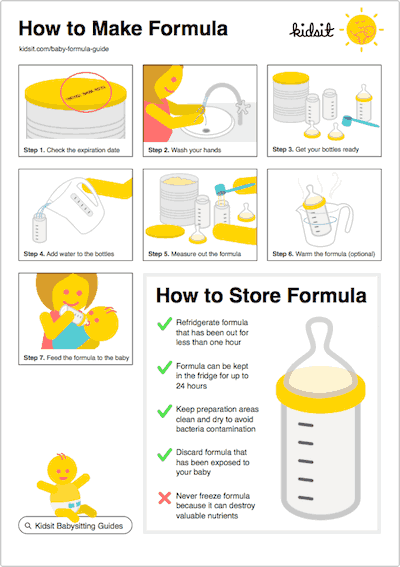
Download our Baby Formula Guide
Download our printable guide to making and storing baby formula and keep a copy in your babysitting binder, so you always have it with you while you're on the job.
(baby-formula-guide.pdf 69kb)
Download our other printable babysitting documents too!
Conclusion
The first time you have to prepare baby formula and feed an infant, it can seem like a scary task, just like holding a baby or changing a diaper for the first time. But it's a straightforward process, and there's nothing to worry about. You'll get the hang of it in no time!
Next:
How to change a diaper

